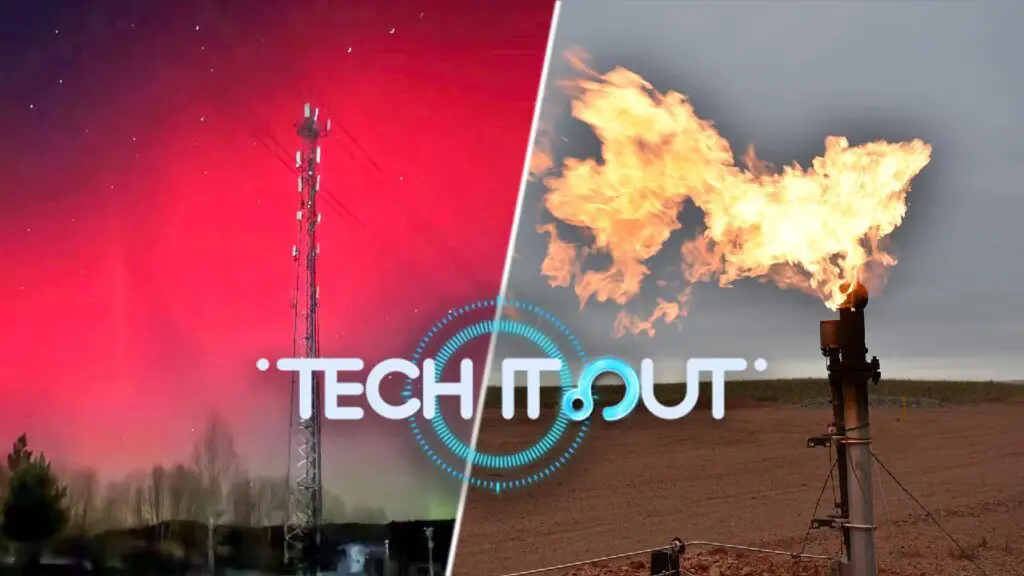The UN climate change conference, COP28, in Dubai has seen new climate pledges. The United States is cracking down on methane emissions from the oil and gas industry, banning routine flaring of natural gas from newly drilled oil wells and requiring monitoring for leaks. A solar eruption has led to stunning auroras in China, including in Beijing, while a snail-inspired robot aims to tackle microplastic pollution in the ocean. Meanwhile, penguins have a unique sleeping strategy. Let’s delve into these fascinating developments.
UN Climate Change Conference: New Pledges to Combat Methane Emissions
The UN climate change conference, COP28, held in Dubai has seen new climate pledges, particularly targeting methane emissions from the oil and gas industry. The United States has unveiled final rules to crack down on methane release, including the ban of routine flaring of natural gas produced by newly drilled oil wells. Additionally, oil companies are required to monitor for leaks from well sites and compressor stations. Furthermore, a program for third-party remote sensing to detect large methane releases will be established. These measures aim to fulfill a 150-country pledge made two years ago to slash methane emissions by 30 percent from 2020 levels by 2030. This commitment marks a significant step towards addressing climate change and its associated impacts.
Stunning Auroras: Rare Phenomenon Spotted in China
A rare and stunning aurora has been spotted in China, particularly in high-latitude areas such as northeast China’s Heilongjiang and north China’s Inner Mongolia. Interestingly, this phenomenon also appeared in lower latitude areas, including Beijing, marking the second time the Chinese capital has witnessed the auroras. This remarkable occurrence is attributed to a solar eruption that took place at the end of last month. The sight of auroras in areas not commonly associated with such events is a testament to the extraordinary and unpredictable nature of natural phenomena, serving as a reminder of the awe-inspiring wonders of the natural world.
Snail-Inspired Robot: Tackling Microplastic Pollution in the Ocean
A novel approach to combating microplastic pollution in the ocean has emerged in the form of a snail-inspired robot. Designed based on the Hawaiian apple snail, this robot aims to scoop microplastics from the ocean by utilizing the snail’s method of driving water surface flow and sucking in floating food particles. The current methods of plastic collection, such as drag nets or conveyor belts, lack the precision required to retrieve microplastics effectively. By mimicking nature’s design, scientists hope to use the robot to scoop tiny particles of plastic, which pose a significant threat to marine animals and ultimately find their way into the food chain, potentially harming humans. This innovative solution presents a promising step towards addressing the pressing issue of plastic pollution in our oceans.
Penguins’ Sleep Strategy: Understanding Unique Adaptations
Chinstrap penguins have an extraordinary sleep strategy, characterized by brief four-second naps. This unusual sleep pattern allows them to nod off thousands of times per day, ensuring they meet their daily sleep needs of around 11 hours while remaining continuously vigilant over their nests. Although this sleeping behavior may seem peculiar, it offers a glimpse into how wild animals adapt to the demands of survival and rest. However, scientists caution that such micro sleeps could pose risks for humans, particularly in activities like driving. Studying these unique adaptations offers valuable insights into the delicate balance between the demands of survival and the need for rest in the natural world.
These developments at COP28, the breathtaking auroras, the innovative snail-inspired robot, and the unique sleep strategy of penguins provide fascinating insights into the natural world and our ongoing efforts to understand, protect, and coexist with it. As we continue to navigate the complexities of climate change, environmental conservation, and wildlife preservation, these remarkable phenomena and innovations serve as poignant reminders of the interconnectedness of all life on our planet and the importance of valuing and safeguarding our natural heritage.


